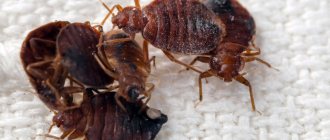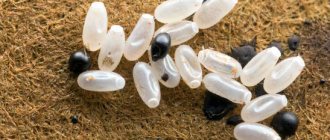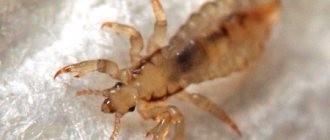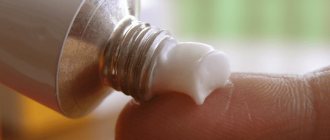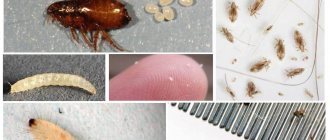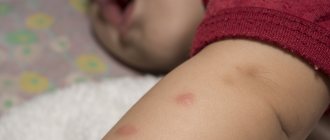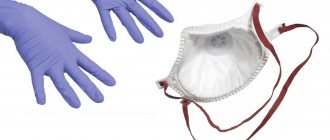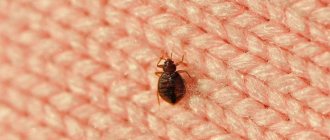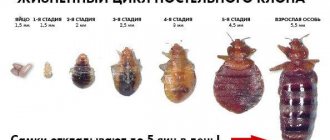A bed bug is an insect that is very difficult to catch with a trap. This is due to his lifestyle and eating habits. When hunting, the parasite focuses on the smell of carbon dioxide emitted by a sleeping person. It will not work to “persuade” him to go “for a piece of sugar” or other food, as happens with cockroaches and ants. Until now, bedbug traps are a very unreliable means and getting a bloodsucker there is more likely to be accidental than natural.
It is little consolation that the traps sold on foreign websites are no more effective and nothing new has been invented in other countries. Almost all devices are used not to destroy parasites, but to diagnose infestations and calculate the approximate population size.
Types of traps
Regardless of whether the device was purchased in a Russian store, on a foreign website, or made with your own hands, all bedbug traps in the apartment are divided into three types:
- mechanical;
- chemical;
- based on adhesives.
The “classic” option – bed legs placed in a cup of water – is one of these mechanical traps. You can buy special cups or use improvised means. The essence is the same: a house bug falls into the water and drowns if it cannot get out.
Insect traps
The disadvantage of this type of bedbug trap is no less classic: the bloodsuckers climb onto the ceiling and from there fall onto the bed. Nowadays, it has become clear that this is not a “hunting tale” of the 19th century, but a harsh reality. This type of trap can only be used as an indicator of the presence of bedbugs in the apartment and provided that they have not yet taken up residence in the bed.
The only option when this bedbug trap works, and even then not completely: if the bedbugs are already living in the bed or mattress. Method of setting the trap: put all the legs of the bed in cups of water, sleep yourself in another place. Hungry bugs will try to climb down the legs and end up in the water.
Important!
Bed bugs can just as easily fall off a bed frame.
It will not be possible to get rid of all parasites this way. You can catch adults and larvae, but the eggs will remain. Reviews of bedbug traps of this type show that their effectiveness is very low. But the cost is also cheap.
Is it even worth doing this?
Of course, before you start making snares, you need to determine whether there are unwanted animals in the apartment.
The following identification phenomena will be characteristic evidence of an extraneous presence:
- Blackish-red spots on bedding, clothing, household items, or walls. These are traces of enemy droppings. These spots can also be bedbugs themselves, crushed by something heavy.
- Bites on the skin. Body itching is not good! Obviously, you somehow irritated the outer skin or someone else did it. Remember if there was any tactile contact with nettles, or if you took any suspicious medications that could cause an allergic reaction. When there are a lot of spots and they come in a chain, then with one hundred percent certainty it should be said that this is the work of the proboscis of bedbugs.
- Specific smell. Sniff the spots mentioned earlier. Having sensed the miasma, conclude: parasites. This sign is considered the most accurate.
Chemical traps
These are the same traps that catch cockroaches: Combat, Raid and other similar devices. The principle of destroying parasites is based on poisoning them with a substance located inside the trap. But cockroaches can be lured with something “tasty”, but this will not affect bedbugs: their food is human blood.
Chemical traps for pest control
Combat traps for bedbugs are good because they poison not only the parasite that visits them, but also its relatives. The active ingredient in the trap is hydromethylnon. Delayed poison. An insect that runs inside the device not only poisons itself, but also brings a dose of poison to its relatives in the shelter. Of all devices of this type, this is one of the most effective.
Review
We bought a dozen Combats at once and installed them wherever possible. The population of bloodsuckers has decreased greatly, but the bites have not disappeared at all. Still, later I had to call a service to exterminate bedbugs. The parasites were crawling from our neighbors, so now we continue to keep traps in areas of possible “guerrilla trails.” Sometimes we find dead bedbugs there.
Sofia, Moscow
Preparing walls for wallpapering
Removing unwanted insects largely depends on how thoroughly you treat the room. It is recommended to start disinfection by treating the walls and ceiling. Before re-pasting the wallpaper, we prepare the walls. Initially, you need to get rid of the old wallpaper, remove it from the wall and take it out of the room as quickly as possible. Then dilute the solution for treating the walls in a basin. To do this you will need:
- one alkaline 72% laundry soap,
- 1 teaspoon of soda,
- 1 liter of hot water.
Grate the soap on a coarse grater and fill it with hot water, then add soda. Mix everything and leave for 20-30 minutes until the mass becomes homogeneous. With this solution you need to thoroughly wipe the walls, ceiling and all places where bedbugs have been found to accumulate.
Adhesive tapes
You should not try to make adhesive tapes for bedbugs yourself. They are coated with a special adhesive that does not dry out for a long time. It cannot be reproduced at home. It's easier to buy such tapes in a store. They are inexpensive. They are used against other unwanted “guests” of the house and flies.
Sticky tapes for bedbugs
Tapes are placed in places where parasites are expected to move and live. You can place them in the lower compartment of the sofa. The basic rule: there must always be free space between the tape and the surface above it, otherwise the tape will stick and will not perform its functions. Efficiency is similar to chemical devices: the insect must go there.
On a note!
Today, carbon dioxide traps for bed bugs are considered the most effective, but they are not sold in Russia.
In foreign stores, the price for such devices is also very high. The Nuvenco Bed Bug Beacon device costs from 3,500 rubles. and you will need more than one Bed Bug Beacon cylinders. This brings us close to the idea of creating a homemade carbon dioxide trap.
Homemade traps
The main difficulty in creating a bedbug trap with your own hands is the inability to attract bloodsuckers. No standard baits can be used against bed parasites. The bait for house bugs is carbon dioxide released by a sleeping person. Bloodsuckers are attracted to the smell of gas. They crawl on it to get to a living organism and drink blood.
On a note!
The use of carbon dioxide in a bedbug trap makes such devices the most effective. Paradoxically, such a trap, made by yourself, is very cheap compared to the store-bought version.
Popular questions
Is it worth using devices if there are a large number of bedbugs in the house? If the home is heavily infested, they can be used, but only in combination with other insecticides that have destructive properties for bedbugs.
What traps are best to use to prevent bedbugs from entering? In order to prevent the appearance of parasites, it is recommended to use devices and agents that have repellent properties. For example, dry chamomile or cloves scattered in secluded corners of the room will help repel insects.
Are traps safe?
Most products and devices of this kind are non-toxic and do not contain toxic substances. Accordingly, their use will eliminate the risk of poisoning people and domestic animals. Self-made traps are especially safe.
Homemade CO₂ trap
Do-it-yourself bedbug traps
In advice on making such a device, you can often find recommendations: buy a can of CO₂, dry ice, or make yeast dough. There is no clear explanation of what to do next with these CO₂ sources.
But there is an effective type of homemade bug trap with yeast:
- 1 PET bottle 2 – 3 l;
- scissors;
- textile;
- sugar;
- yeast.
No expensive ingredients or devices. In this case, the principle of a trap set by an antlion is used. How to make a bedbug trap that emits CO₂:
- cut the bottle into 2 parts along the top edge of the label;
- place the cut part in the main body with the neck down, making a funnel;
- wrap the outside of the bottle with a cloth so that the edges of the rag hang slightly into the funnel - the bug should be able to rise to the top;
- pour a mixture of water, sugar and yeast into the bottle;
- wait for it to ferment;
- place it in a room closer to the bedbug shelter;
- periodically change the contents of the bottle.
Important!
CO₂ traps only work well in non-residential apartments.
Review
The appearance of bedbugs in our apartment coincided with our vacation trip. We took advantage of the moment and placed bottles of mash everywhere. Returning home, they poured out the exhausted contents with a bunch of dead bloodsuckers. We didn't have any more bedbugs.
Svetlana, Sevastopol
Man emits much more carbon dioxide than any of the traps. Therefore, fighting bedbugs with the help of such devices can only be effective if you move to another place of residence for some time.
Are there any baits for bedbugs?
Many people are interested in whether vanillin serves as bait. No, it doesn't. Vanillin is a repellent. That is, it repels bedbugs. A mixture of vanillin and soda, scattered around the perimeter of the bed, will repel bloodsuckers if they have not yet settled in the bed. The bait for parasites is exclusively CO₂.
Even the most advanced trap will not be able to completely rid your home of bedbugs, especially if the population is already large. These are indicators of the presence of bloodsuckers. If parasites are found in a trap, you will have to call exterminators or use bedbug repellents.
How to make quality wallpaper glue
Most often, people buy wallpaper glue from the same place where wallpaper is sold, and sellers/consultants recommend a specific glue for the selected wallpaper. Depending on what kind of wallpaper you are going to buy, you will be offered a certain type of wallpaper glue. In principle, they are all the same type and their differences are only in the method of dilution and density. The thicker the wallpaper you buy, the more firmly the glue should hold the strip of wallpaper. For paper wallpaper, glue is cheaper, you need less of it and the density of the glue diluted in the bucket will be low.
For thick wallpaper with embossing, vinyl, non-woven or metallic wallpaper, the adhesive must be thick and strong so that the strip does not peel off. It is stupid to save money when buying wallpaper glue, especially if you bought good, expensive wallpaper. After all, if you buy cheap glue or buy little of it, hoping to dilute it thinner with water, then it will be difficult to glue the wallpaper strips, and then the wallpaper may come off. Why do we need such savings? If you are already doing repairs, then do it conscientiously, after all, you are doing repairs for yourself, and redoing it will be even more expensive and troublesome.
